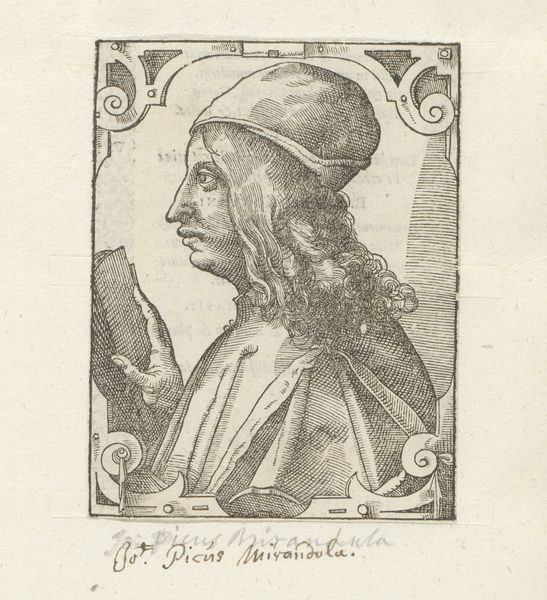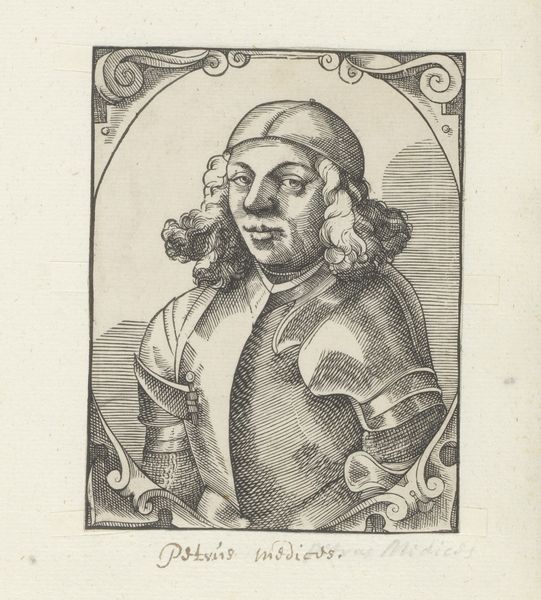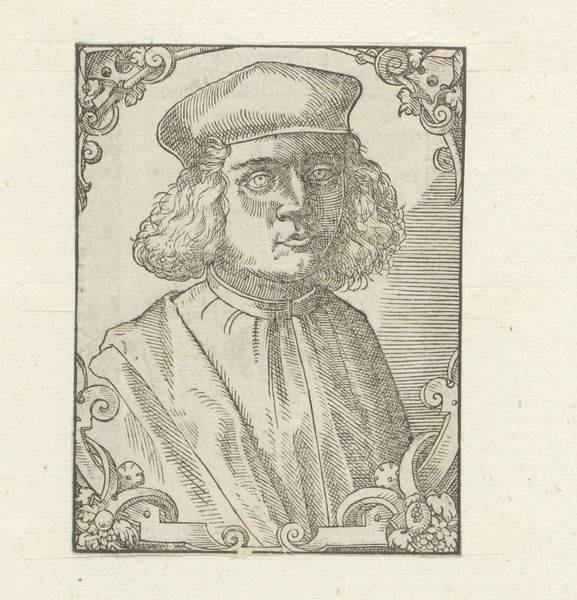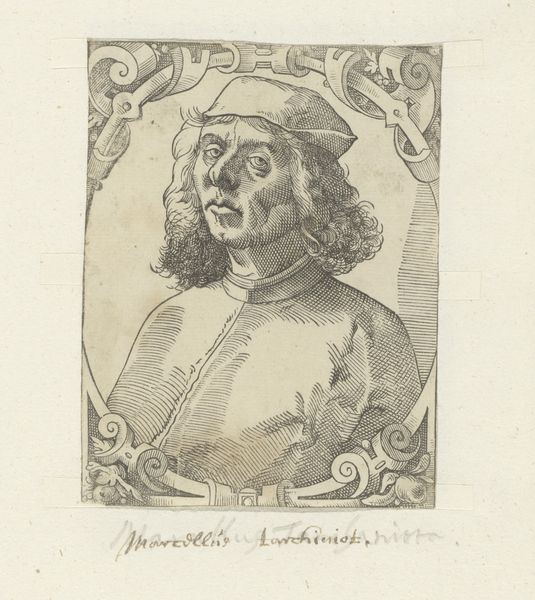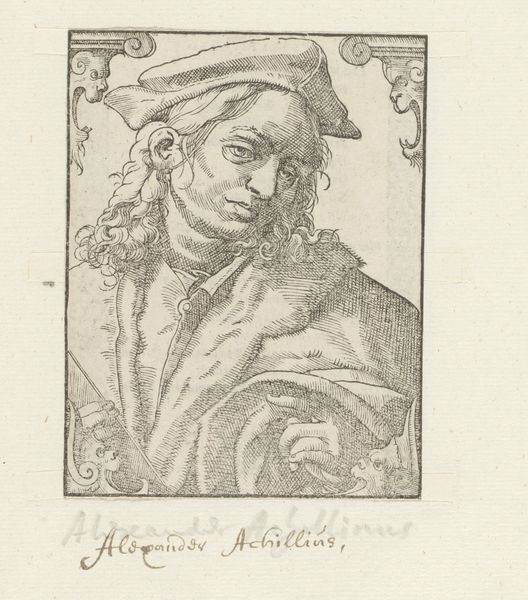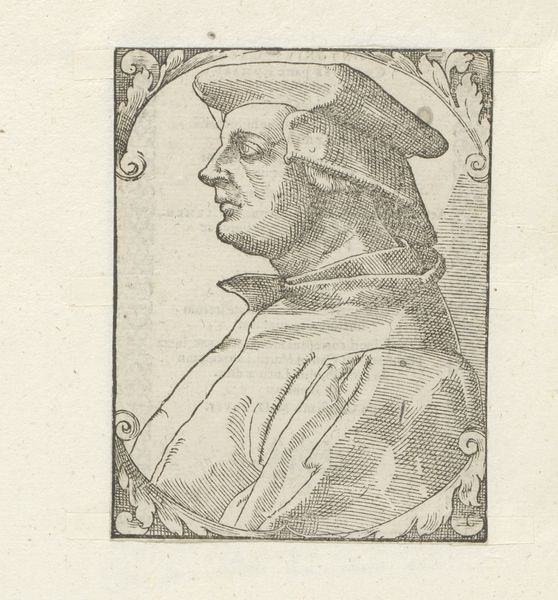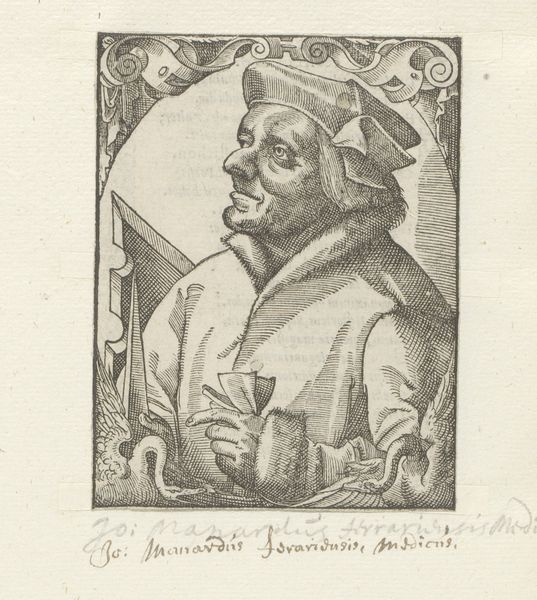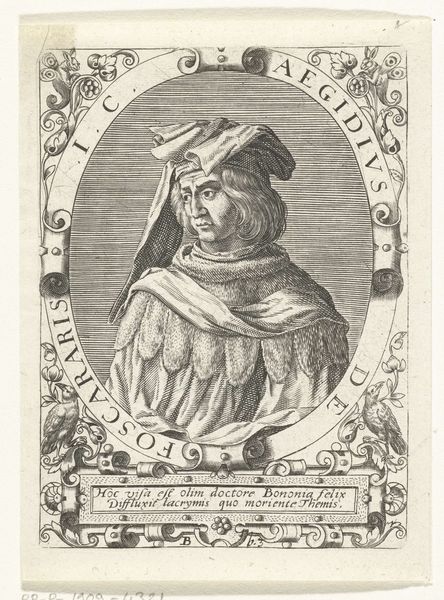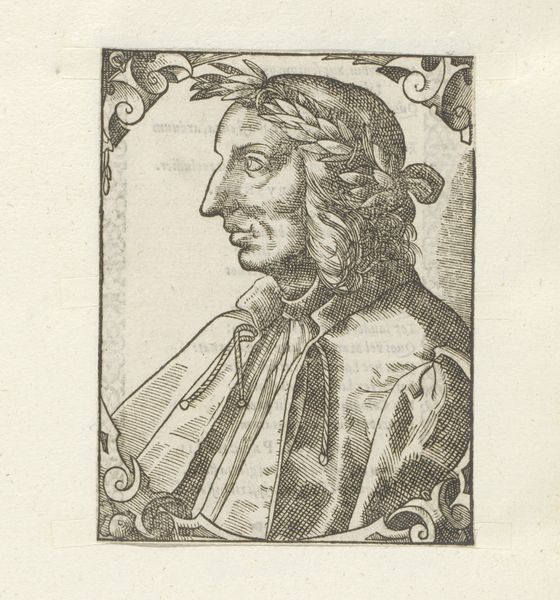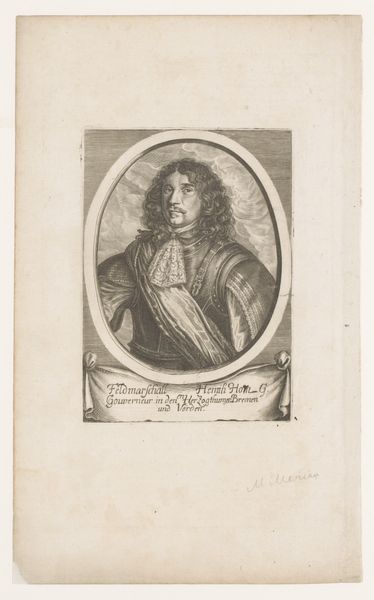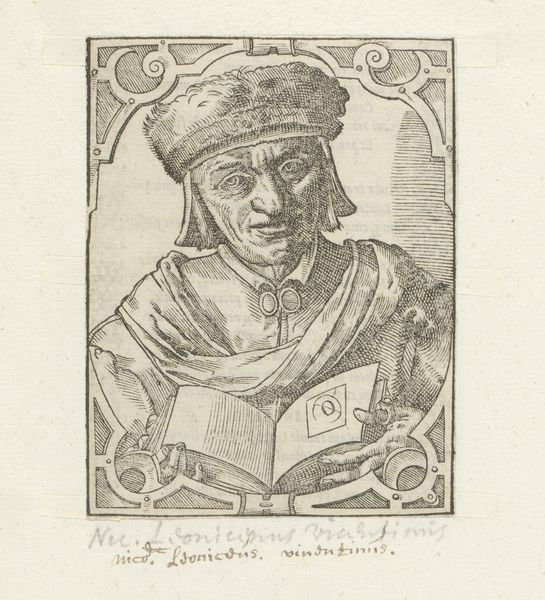
print, engraving
#
portrait
# print
#
old engraving style
#
figuration
#
11_renaissance
#
history-painting
#
italian-renaissance
#
engraving
Dimensions: height 108 mm, width 86 mm
Copyright: Rijks Museum: Open Domain
Curator: We’re standing before an engraving titled "Portret van Francesco Sforza," dating from between 1549 and 1575. It captures the likeness of Francesco, son of Isabella of Aragon, from the Italian Renaissance. Editor: My first thought is, well, what an intense gaze! There’s also something unsettling about those calipers he's holding so deliberately. The stark contrast creates a powerful presence. Curator: Absolutely. The calipers speak volumes. Beyond being a symbol of measurement, it represents intellect, precision, and even control – themes closely tied to the Sforza dynasty’s ambition. We are meant to think of him as a ruler, calculating and capable. Editor: Thinking about the physical production, engraving involves meticulous labor. The artist would have painstakingly etched lines into a metal plate. You have to think about the skill involved and time investment just to prepare for the actual printing. It speaks to a society invested in not just *making*, but honoring meticulous handcraft. Curator: Indeed, and considering how printmaking enabled wider distribution of images, this served to solidify his image as a symbol of power and legitimacy. Each line etched carried a symbolic weight. He holds those calipers like a scepter; the frame, a stylized architectural element to declare his status. Editor: So this image acts as both art object and form of early media then, with the print functioning to actively *produce* that "power and legitimacy" you mentioned in material terms for circulation? It almost makes me reconsider our modern definitions between art and propaganda. Curator: Precisely. We see that interplay constantly within portraits from that time period. It is interesting to think of the frame as not just decorative but deeply indicative of a will to power, just as is evident in his gaze. He projects strength, calculation. Editor: Examining this through a material lens really highlights how inextricably linked artistic skill, material properties, and social-political messaging were back then... and frankly, probably always are, even if subtly! Curator: An excellent point. Hopefully we can all carry a piece of those lessons forward into thinking about the construction of images even today. Editor: Exactly—I leave considering how easily an image—from print to pixel—can influence how we see the world and interpret power, maybe even unconsciously.
Comments
No comments
Be the first to comment and join the conversation on the ultimate creative platform.
